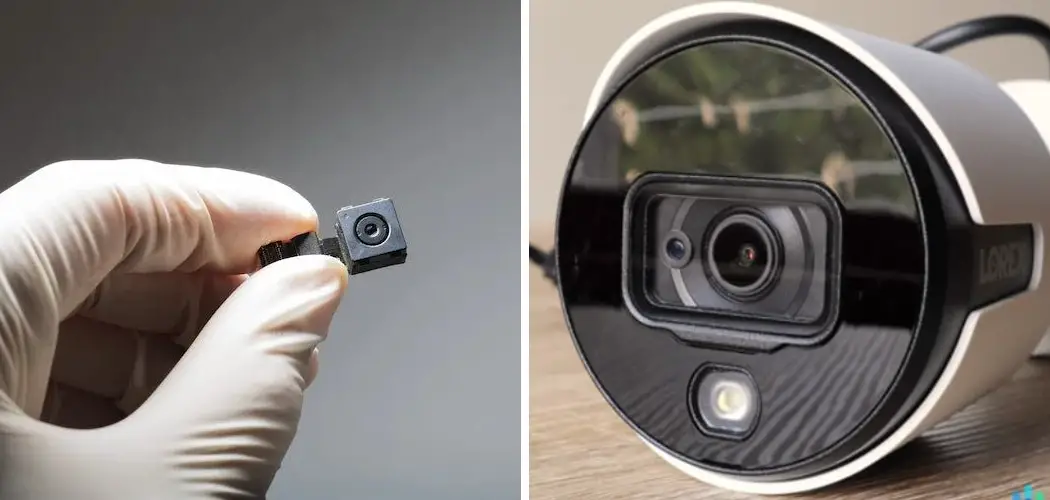Are you worried about the visibility of your security camera? Do you want to keep it hidden from potential intruders or visitors? If yes, then you have come to the right place.
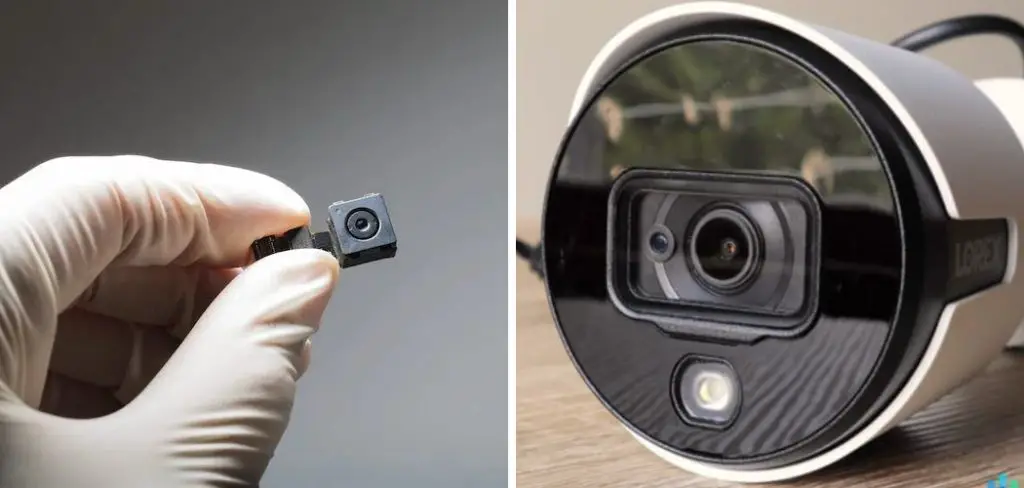
In today’s world, home security is paramount. As technology evolves, so does the need for discreet surveillance within our homes. Hiding a security camera inside your home not only helps in monitoring and ensuring the safety of your premises but also in maintaining the aesthetic appeal of your interior décor. This guide aims to provide you with innovative and practical methods on how to hide security camera inside.
From selecting the right camera to choosing the ideal placement and camouflage techniques, we will cover all you need to know to enhance your home security while keeping your surveillance system virtually invisible.
Why Hide Your Security Camera?
Before we discuss ways to conceal your security camera, let’s first understand the importance of doing so. The most obvious reason is to keep burglars and unwanted visitors from tampering with or damaging your surveillance system. Visible cameras can also make your home a target as they indicate valuable possessions inside.
Moreover, hiding your security cameras can also prevent them from being easily disabled by intruders. If they do not see the camera, they are less likely to know there is one and where it is located. This can provide you with valuable footage in case of a break-in or other security incidents.
What Will You Need?
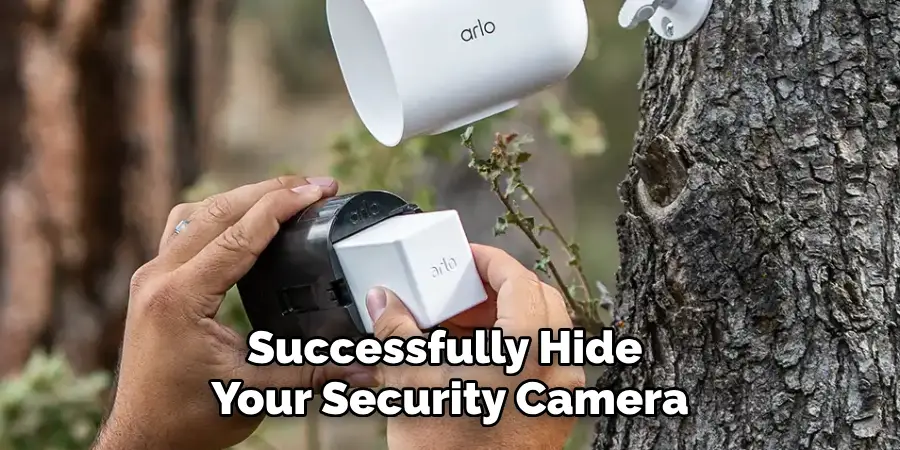
Here is a list of items that you may need to successfully hide your security camera inside:
- A small, discreet camera (such as a mini dome or hidden/ spy camera)
- Mounting brackets
- Double-sided tape or adhesive strips
- Disguise materials (such as fake plants, books, picture frames, etc.)
- Extension cords and power outlets (if necessary)
- Wi-Fi or Bluetooth enabled cameras (optional for remote access and control)
Now that you have an idea of why hiding your security camera inside is important and what materials you may need let’s get into the steps on how to actually hide them.
10 Easy Steps on How to Hide Security Camera Inside
Step 1. Choose the Right Camera:
The first and most crucial step in concealing your security camera is choosing the right type. For indoor use, it’s best to opt for a small, discreet camera that can easily blend into your home environment without drawing attention. Mini dome cameras or hidden/spy cameras are excellent choices due to their compact size and less conspicuous designs.
These cameras can be hidden in plain sight, looking like everyday household items, or easily masked by other objects. When selecting a camera, consider its features as well—look for cameras with high resolution, good low-light performance, and motion detection capabilities to ensure comprehensive surveillance without compromise.
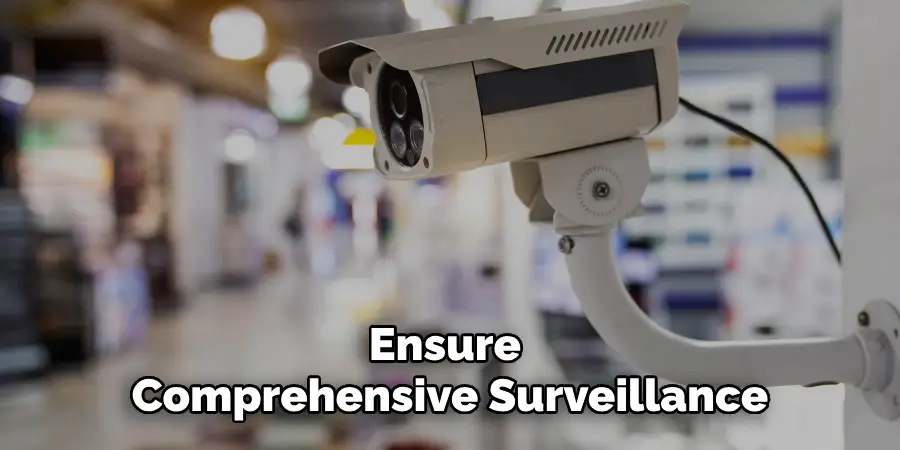
Remember, the goal is to maintain security while preserving the aesthetic of your home, so take your interior decor into account when making your choice.
Step 2. Identify Strategic Locations:
Once you have selected the right type of camera for your needs, the next step is to identify strategic locations within your home where surveillance is most needed. Areas such as the main entrance, living room, hallways, and near valuable possessions are critical spots. When choosing locations, consider places that offer a clear view of the area without obstructions, yet are subtle enough not to attract attention.
Look for high vantage points that cover a wide area or positions that are naturally concealed by the home’s design, such as above bookshelves, inside decorative items, or amongst other electronics. The key is to ensure the camera has a good field of view of the area it needs to monitor while remaining hidden from plain sight.
Step 3. Use Disguise to Your Advantage:
Disguising your security camera is an effective way to keep it hidden while maintaining its functionality. You can use everyday household items as camouflage without compromising the camera’s field of view. Consider incorporating your camera into a bookshelf by placing it within a hollowed-out book or behind small objects that do not obstruct its lens.
Alternatively, you might install the camera inside a decorative piece, such as a fake plant or a vase, ensuring that the lens discreetly peeks out. Other creative disguising options include mounting the camera inside a birdhouse that you can hang indoors or using a wall clock with a secret compartment. The key is to select a disguise that blends seamlessly with your home decor while allowing the camera to perform its surveillance duties effectively.
Remember to periodically check that the disguise does not hinder the camera’s view or functionality, especially after any adjustments to the room’s setup.
Step 4. Ensure Proper Lighting:
A vital aspect of hiding your security camera effectively is to ensure it has adequate lighting to capture clear footage, even when disguised. Poor lighting can render the most advanced camera useless if it cannot capture distinguishable images or videos. Consider the lighting conditions of the area where the camera is placed.
If natural light is insufficient, you may need to strategically place lamps or other light sources to enhance visibility without drawing attention to the camera. Additionally, selecting cameras with good low-light performance or infrared capability can significantly improve the quality of the footage in dimly lit environments.

Be mindful to position the camera so that it is not directly facing any light sources, as this could cause glare or reflections that might obscure the video feed.
Step 5. Secure the Camera Properly:
Ensuring your security camera is securely mounted is crucial to its efficiency and discretion. Whether you’re placing the camera within a discreet location or incorporating it into a household item for disguise, it’s essential to use the appropriate mounting brackets and adhesive strips.
For indoor cameras, especially those disguised within objects, double-sided tape or adhesive strips can offer a simple yet effective mounting solution. However, make sure that the adhesive you choose won’t damage the surface it’s attached to or the disguise itself. For more permanent installations, consider using screws or mounting brackets that can be hidden within the decor.
The camera must stay in place without shifting, as movement could expose it or compromise the angle of surveillance. Always test the stability of the camera after installation to ensure that it is securely positioned and that the disguise maintains its effectiveness over time.
Step 6. Maintain Remote Access for Convenience:
Once your security camera is hidden and properly set up, ensuring that you have remote access to its feed is essential for continuous surveillance and convenience. Opting for Wi-Fi or Bluetooth-enabled cameras allows you to monitor your home in real time from anywhere using a smartphone, tablet, or computer.
This capability not only offers peace of mind when you are away but also enables you to adjust camera settings, view live footage, and even store recordings without having to interact physically with the camera itself. Additionally, consider using security apps or software that provide notifications and alerts based on motion detection or specific surveillance criteria.
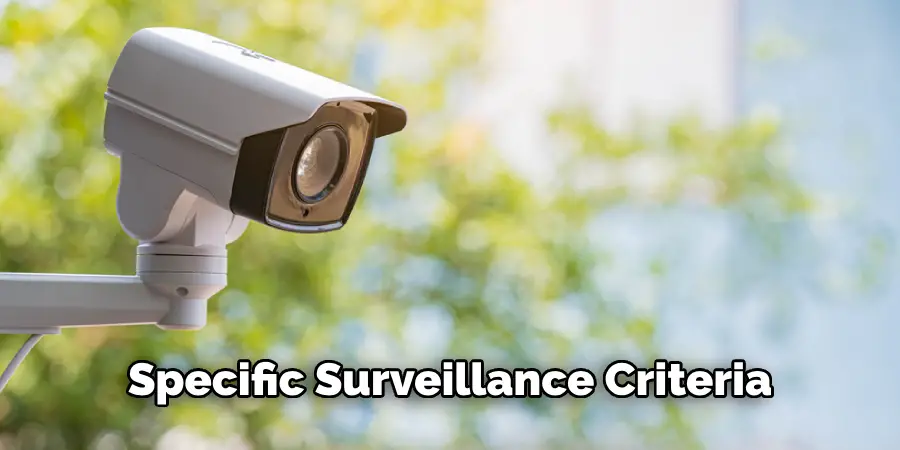
By maintaining remote access, you can quickly respond to any suspicious activities or check on your home’s security status at any time, ensuring that your hidden camera serves its purpose effectively while remaining out of sight.
Step 7. Regularly Update and Test Your System:
To ensure your security camera system remains effective and dependable, it’s crucial to regularly update the camera’s firmware and any associated security apps or software. Manufacturers often release updates that enhance the camera’s functionality, improve its compatibility with newer devices, and patch security vulnerabilities.
Aside from technological updates, periodically testing your camera system is equally important. Make it a routine to check the video feeds for clarity, ensure the disguise has not been compromised, and verify that all motion sensors or alarms are functioning correctly.
Regular maintenance checks allow you to address any issues promptly, ensuring that your hidden security cameras continue to provide reliable surveillance without drawing attention to themselves.
Step 8. Review and Adjust Privacy Settings:
An essential, often overlooked aspect of setting up a hidden security camera system is reviewing and adjusting its privacy settings. Ensuring that your surveillance system is configured to protect your privacy and the privacy of others is paramount.
Take the time to familiarize yourself with the camera’s privacy features, such as data encryption, password protection, and secure Wi-Fi connections. Additionally, be mindful of the legal implications and ethical considerations surrounding video surveillance, especially if your camera could capture footage beyond your property lines. Adjusting the camera’s field of view to avoid unintentional recording of public or neighbor’s spaces can help mitigate privacy concerns.
Regularly reviewing these settings and ensuring your system’s security features remain up to date will safeguard against unauthorized access and ensure your surveillance practices are in compliance with local laws and ethical guidelines.
Step 9. Continuously Monitor and Audit Security Footage:
To maximize the effectiveness of your hidden security camera system, it’s imperative to actively monitor and audit the captured footage regularly. Establishing a schedule for reviewing recorded videos can help you identify any unusual activities or security breaches that may have occurred.
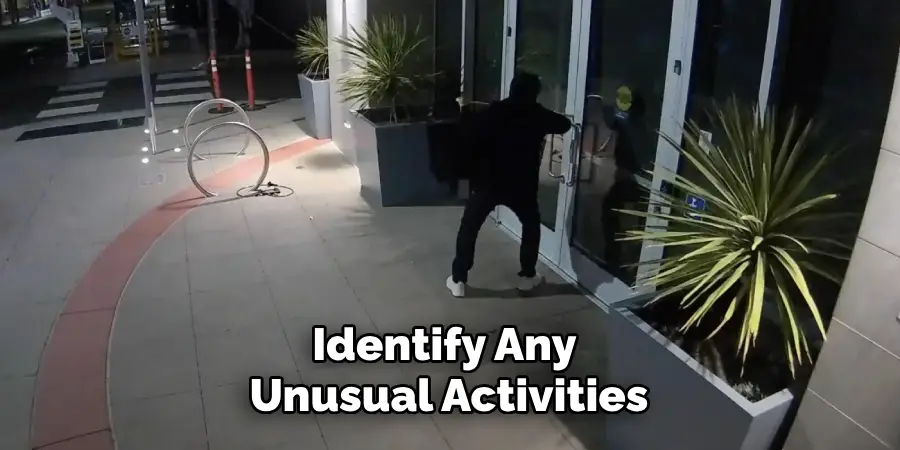
This practice not only enhances the security of your property by allowing for timely responses to potential threats but also aids in fine-tuning the positioning and settings of your cameras for optimal coverage. Additionally, ensure that your data storage solutions, whether cloud-based or local, are secure and have ample space to accommodate new footage.
Implementing a systematic approach to monitoring and auditing your security footage ensures that your hidden cameras continue to serve as discreetly and efficiently vigilant guardians of your home.
Step 10. Ensure Compliance with Laws and Regulations:
Finally, it’s paramount to ensure your hidden security camera system complies with all local laws and regulations regarding surveillance and privacy. This includes understanding the legalities around recording audio, as laws can be significantly stricter compared to video surveillance.
Before setting up your system, thoroughly research and adhere to your jurisdiction’s requirements to avoid legal repercussions. It’s advisable to consult with a legal expert if you’re uncertain about the specifics. Remember, the goal of your hidden camera system is to enhance security, not to infringe upon the rights of others or violate privacy laws.
Keeping informed and compliant not only protects you legally but also upholds a standard of ethical surveillance practices.
By following these steps, you can effectively and discreetly enhance the security of your home with hidden cameras.
5 Additional Tips and Tricks
1. Use Decorative Items: Incorporate the camera within or behind decorative items that naturally blend with your home’s decor. Think about using fake plants, picture frames, or even book spines to conceal your security camera without drawing attention.
2. Mount It High: Placing cameras high on walls or in the upper corners of a room can keep them out of sight while providing a comprehensive view. This placement makes it less likely for someone to notice or tamper with the device.
3. Hide in Plain Sight: Consider using everyday objects like clocks, smoke detectors, or LED bulbs that come with built-in cameras. These devices are designed to look like normal household items, making them difficult to detect.
4. Utilize Home Automation Systems: Integrate your security camera into your home automation system so that you can control its movements and recording schedule remotely. This way, you can position the camera in a hidden location and adjust it as needed without physically touching it.
5. Use Customized Skins or Covers: Many security cameras come with interchangeable skins or covers that allow you to personalize their appearance. You can choose a skin that blends in with your home’s surroundings, making the camera less noticeable.

With these additional tips and tricks, you can effectively hide your security camera without compromising its functionality.
5 Things You Should Avoid When Hiding Security Cameras Inside
1. Obstructing the Lens: Avoid placing objects directly in front of the camera lens. This can limit its field of view and hinder its ability to capture clear footage, defeating the purpose of having a security camera.
2. Ignoring Lighting Conditions: Do not place cameras in areas with poor lighting or backlighting issues, as this can affect the quality of the recorded video. Ensure the camera’s position optimizes available lighting for clear, discernible images.
3. Compromising Signal Strength: Avoid hiding your cameras in spots that might interfere with their signal strength, especially for wireless models. Metal objects, thick walls, and excessive distances from the router can significantly reduce a camera’s connectivity and performance.
4. Violating Privacy Laws: Be mindful of privacy laws and avoid placing cameras in areas where individuals expect a high level of privacy, such as bathrooms and guest bedrooms. It’s important to balance security with respectfulness and legality.
5. Forgetting Access for Maintenance: Ensure that your hidden cameras are still accessible for maintenance, including battery changes, cleaning, and adjustments. Placing a camera in an overly complicated or inaccessible location can make routine upkeep difficult and time-consuming.
By avoiding these mistakes, you can ensure that your hidden security cameras are both functional and undetectable.
Can Phone Cameras Detect Hidden Cameras?
Phone cameras are not designed to detect hidden cameras. However, some apps and tools are available that claim to detect hidden cameras using your phone’s camera. These apps typically use infrared technology or radio frequency signals to scan for any electronic devices in the vicinity.
However, it’s important to note that these detection methods may not be 100% accurate, as they can also pick up other electronic devices and may not be able to detect all types of hidden cameras. It’s always best to carefully inspect the area yourself and use common sense when trying to locate hidden cameras.
In conclusion, hiding security cameras inside your home can provide peace of mind without compromising its aesthetic. By following these tips and avoiding common mistakes, you can effectively conceal your security cameras and maintain your home’s safety.
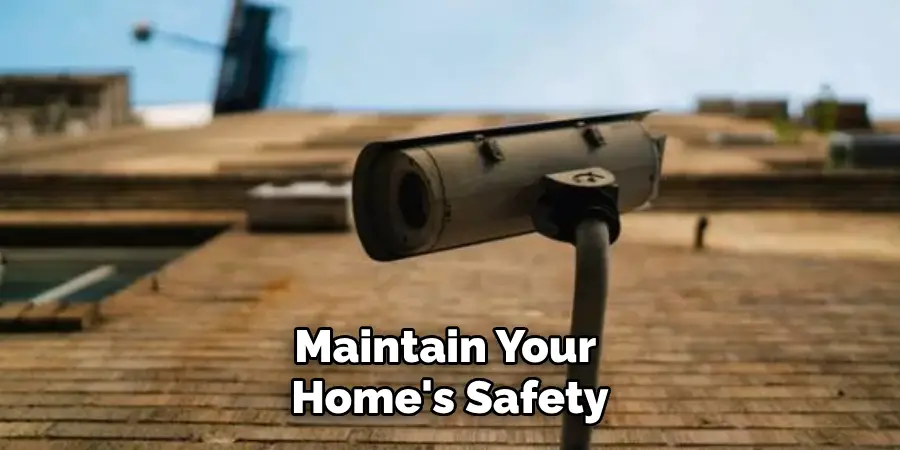
What Are the Disadvantages of Hiding Security Cameras Inside?
While there are many benefits to hiding security cameras inside your home, there are also some potential disadvantages to consider:
- Limited coverage: Hiding a camera in a discreet location may limit its field of view and coverage. This means that you may need to install multiple cameras to cover all areas of your home.
- Difficulty Accessing Footage: If the camera is placed in a hard-to-reach or hidden location, it may be challenging to access the footage for review or maintenance.
- Possible Legal Implications: As mentioned before, it’s important to consider privacy laws and avoid violating them when hiding security cameras. If someone discovers that they were recorded without their knowledge or consent, you could potentially face legal repercussions.
- Higher Cost: Depending on the type of camera and its features, hidden cameras may be more expensive than standard security cameras.
- Limited Options for Customization: While some cameras come with interchangeable skins or covers, there may be limited options available to match your home’s specific decor. This could result in a less discreet appearance or require additional DIY solutions.
Despite these potential drawbacks, hiding security cameras inside can still be a viable option for maintaining the safety and security of your home with proper planning and consideration.
Conclusion
How to hide security camera inside is a strategic way to enhance your home’s security while preserving its aesthetic appeal. By incorporating cameras discreetly into your home environment, you can monitor for safety without the intrusive presence of visible security equipment.
It’s essential to balance effective concealment with the camera’s functionality, ensuring that its field of view is unobstructed and remains accessible for maintenance.
Following the outlined tips and avoiding common pitfalls can lead to a secure yet unobtrusive surveillance system. However, it’s crucial to remain mindful of legal privacy considerations and the potential limitations of hidden cameras, such as coverage gaps and access to footage.
With thoughtful placement and integration, hidden security cameras can provide peace of mind and an added layer of protection for your home.

